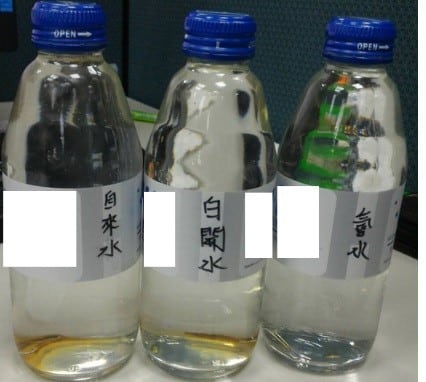低氘氫水實驗室 研究項目
- 極超高純氫氣研究—7N、8N維米製程氫氣
- 固態儲氫器研究、太空船用固態儲氫器研究
- 低氘飽和氫水製程研究及應用研究
- 低氘水用於生物實驗及製藥應用研究
- 氫氣呼吸之劑量及物理效應研究
- 低氘水用於育苗育種農業生技研究
- 氫氣用於食品科學研究
- 低氘水用於食品科學研究
- 呼吸氫氣及低氘飽和氫水之於癌症、中風、巴金森症、妥瑞症、糖尿病、心肌損傷、肝損傷、腦中風、放射治療損傷、老年癡呆、心肌硬塞、痛風、COPD、異位性皮膚炎、僵直性脊椎炎、過敏、紅斑性狼瘡及自體免疫性疾病之觀察研究
題目如何翻譯請多指教。
這是發表在實驗生物學上的一篇評論性文章,是對我們首次發表使用氫氣鹽水治療疾病的,給我們的評價比較高,我們認為是比較客觀。畢竟真金不怕火煉。
HYDROGEN SALINE A REAL GAS
網上全文:
First published online July 17, 2009
Journal of Experimental Biology 212, va (2009)
Copyright © 2009 The Company of Biologists Limited
doi: 10.1242/jeb.021592
HYDROGEN SALINE A REAL GAS
|
||||||||||||||||||||||||||||||||||||||||||||||||||
Sarah L. Milton
Florida Atlantic University
Outside JEB |

The 2005 announcement in Science that the inhalation of hydrogen sulfide gas (H 2S) could induce a reversible hypometabolic state in mice, similar to suspended animation, set off a flurry of speculation and investigation into the mechanisms and potential therapies suggested by the discovery, from the possibility of extended space travel to improving the outcome after a stroke. Breathing the gas decreased body temperature, respiratory and heart rates, and activity levels, all without incurring brain damage. The initial report was followed by the determination that mice could tolerate hours of otherwise lethal hypoxia if exposed to the gas first, suggesting H 2S as a potential therapy for hypoxia-related diseases. Cessation of blood flow (ischemia) and reperfusion, as occurs in stroke or during a heart attack, causes both cell death (apoptosis)and inflammation, and the gas has proved to improve survival by combating both of these pathologies. Hydrogen gas alone is also protective against ischemia–reperfusion injuries, primarily by neutralizing free radicals, but utilizing highly flammable hydrogen gas in a clinical setting poses a safety risk . This led Jianmei Cai and his colleagues at the Medical Universities in Shanghai and Shandong to wonder if injecting saline saturated with hydrogen gas could similarly protect newborn rats against ischemia, as reductions in blood flow or oxygen during birth can lead to significant brain damage.
The investigators first tested three concentrations of hydrogen saline in rat pups subjected to low oxygen (hypoxia) and brain ischemia (reduced blood flow) to determine the best concentration. Hydrogen-saturated saline was injected into the peritoneal cavity and the levels of brain damage determined by staining brainslices to look for dead vs live cells; by examining activity levels of an apoptotic marker (caspase-3) that indicates that cells have died; and by measuring levels of oxidatively damaged lipids, as lipid and protein damage are symptoms of oxidative stress, which continues to damage cells for hours to days after ischemia–reperfusion. The rat pups also underwent behavioral testing to look for overt signs of brain damage.
Cai’s group found that 5 ml kg –1 of H 2saline almost completely suppressed the damage that occurred in hypoxic–ischemic rats. The number of live cells in the cortex and hippocampus was significantly higher in hypoxic–ischemic animals that had been treated with H 2saline than in animals that were hypoxic–ischemic but not treated with H 2saline, while the volume of dead cells in H 2-treated rats was reduced to non-hypoxic levels. H 2saline also dramatically decreased levels of oxidatively damaged lipids, apoptotic activity and behavioral deficits . The H 2-treated rats that had been exposed to ischemia also sustained less brain damage than the untreated rats. They were able to escape a water maze in approximately half the time that it took for ischemic rats to escape, had better postural responses, and wandered less in their cages.
The key neuroprotective effect of hydrogen is apparently its ability to neutralize free radicals, and while suspended animation and space travel may yet be a long way off, research such as this offers hope that we can begin to significantly decrease the mortality and morbidity associated with strokes , heart attacks and neonatal brain disorders.
References
Cai, J., Kang, Z., Liu, K., Liu, W., Li, R., Zhang, JH, Luo, X. and Sun, X. (2009). Neuroprotective effects of hydrogen saline in neonatal hypoxia –ischemia rat model. Brain Res. 1256,129 -137. [CrossRef] [Medline]
http://jeb.biologists.org/cgi/reprint/212/15/va
台灣氫水實驗室 TEL:0963-210-763
email: hworker77086600@yahoo.com.tw
台灣氫水實驗室部落格:http://blog.xuite.net/hworker77086600/twblog
歡迎來電索取氫水辨認方法(防止喝到傷身的假氫水)
提供玻璃瓶裝飽和氫水供對比,免費兩瓶給你測試,收運費120元。(運費是宅配業者收去的)

